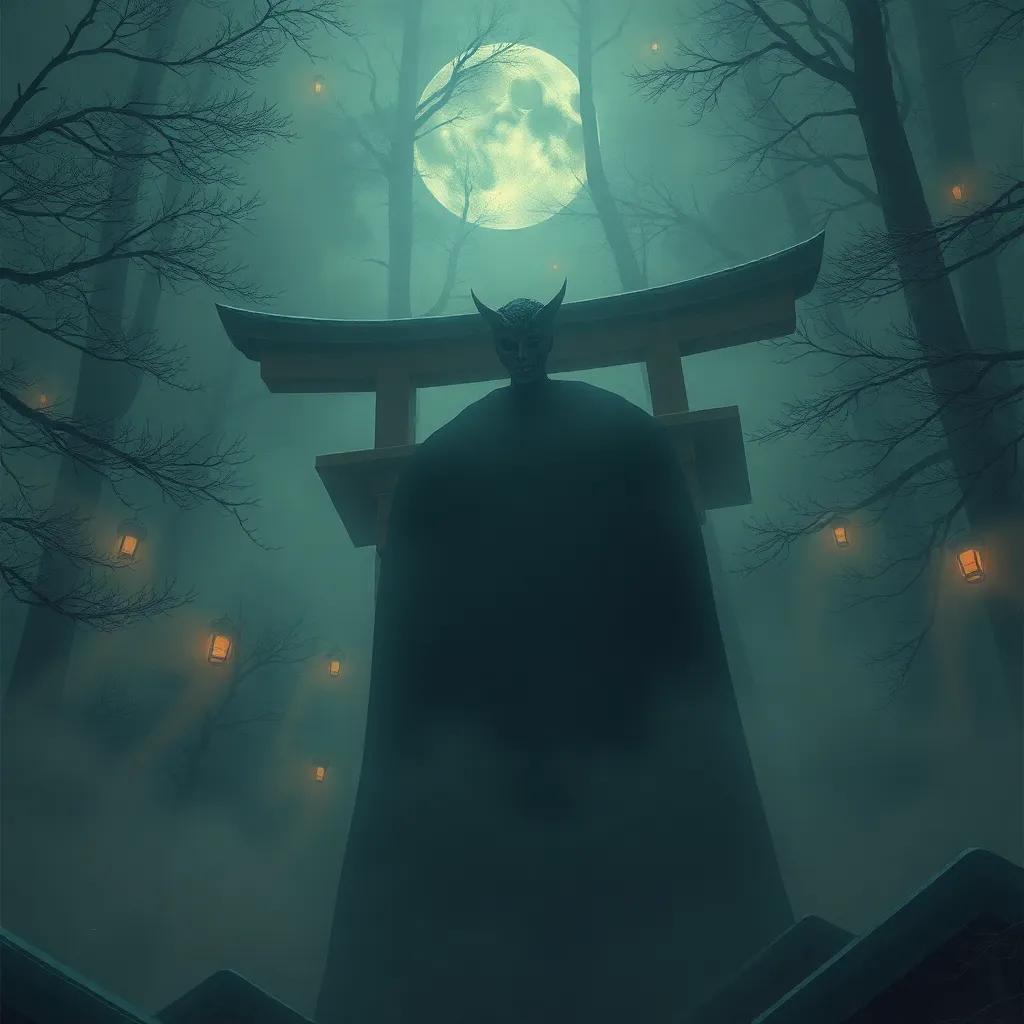The Spectral Realm of the Shinto: Exploring Japanese Ghostlore
I. Introduction to Shinto and Japanese Spirituality
Shinto, the indigenous spirituality of Japan, is a complex tapestry of beliefs, rituals, and practices that centers around the worship of kami, or spirits. These kami can be found in elements of nature, ancestors, and even in human-made objects. Shinto emphasizes harmony with nature, community, and the reverence for the spiritual realm that permeates everyday life.
In Japanese culture, the spiritual realm holds significant importance, shaping societal values, customs, and even individual behaviors. The connection to the supernatural is not just an abstract concept; it is deeply woven into the fabric of daily life, influencing festivals, family traditions, and communal activities.
Within this rich spiritual landscape, the concepts of Yōkai and Yūrei emerge as pivotal elements of Japanese ghostlore. Yōkai are supernatural entities that can be playful, mischievous, or even malevolent, while Yūrei are the spirits of the dead who have not found peace. Together, they represent the duality of Japan’s ghostly narratives—one that invokes fear, curiosity, and reverence.
II. Understanding Yōkai: The Supernatural Entities
A. Definition and characteristics of Yōkai
Yōkai, often translated as “monsters” or “ghosts,” are a diverse group of supernatural beings in Japanese folklore. They can take on various forms, from animals and humans to inanimate objects. Some common characteristics include:
- Shape-shifting abilities
- Interaction with humans, often resulting in mischief or trickery
- Aesthetic appeal, often portrayed with intricate designs in art and literature
B. Historical evolution of Yōkai in folklore
The concept of Yōkai has evolved significantly over the centuries, originating from ancient animistic beliefs and gradually being influenced by Buddhism, Taoism, and other cultural exchanges. Initially, Yōkai were seen as local deities or spirits of nature, but with the passage of time, they became more personified and diverse in their representations.
C. Notable examples of Yōkai and their significance
Several Yōkai have become iconic figures in Japanese folklore. Some notable examples include:
- Kappa: A water-dwelling creature known for its mischievous behavior and love for cucumbers.
- Tengu: Bird-like humanoids often depicted as protectors of mountains and forests, but also as tricksters.
- Tanuki: Shape-shifting creatures resembling raccoon dogs, known for their playful and jolly nature.
These Yōkai serve not only to entertain but also to convey moral lessons and cultural values, reflecting the complexities of human nature.
III. The Yūrei: Spirits of the Restless Dead
A. Definition and cultural significance of Yūrei
Yūrei, often referred to as “ghosts” in English, are the spirits of those who have died but have not found peace in the afterlife. They are typically depicted wearing white funeral garments and having long, unkempt hair, embodying a sense of sorrow and longing.
B. The role of death and the afterlife in Shinto beliefs
In Shinto, death is viewed as a transition rather than an endpoint, and the afterlife is a continuation of existence. Yūrei are believed to arise from improper deaths, unresolved issues, or unfulfilled desires, and their unrest can affect the living. Thus, addressing the needs of Yūrei is an essential aspect of maintaining harmony in the community.
C. Common themes associated with Yūrei, including vengeance and longing
Yūrei often embody themes of vengeance, attachment, and longing. They may seek to fulfill obligations left uncompleted in life or to resolve conflicts that were never addressed. These themes resonate deeply within Japanese literature and art, reflecting the complexities of human emotions and relationships.
IV. Rituals and Practices for Honoring Spirits
A. Traditional Shinto rituals for appeasing Yūrei
Shinto rituals play a crucial role in appeasing Yūrei and ensuring their peaceful transition to the afterlife. Common practices include:
- Offering food and incense at family altars
- Conducting memorial services on specific anniversaries of death
- Performing purification rituals to cleanse the space of lingering spirits
B. Festivals and ceremonies dedicated to the spirits
Festivals like Obon are dedicated to honoring the spirits of ancestors. During Obon, it is believed that the spirits return to visit the living, and families prepare offerings and perform dances to guide them back to their resting places.
C. The role of shrines and offerings in honoring the spectral realm
Shrines serve as focal points for worship and offerings, where individuals can pay their respects to both kami and Yūrei. Offerings may include:
- Food and drink
- Flowers and incense
- Personal items that the deceased cherished
Such practices reaffirm the connection between the living and the dead, maintaining the delicate balance of the spiritual realm.
V. Ghostlore in Japanese Literature and Art
A. Influence of ghost stories in classical Japanese literature
Ghost stories have long been a staple of Japanese literature, with classics like “The Tale of the Heike” and “Yotsuya Kaidan” exploring themes of revenge, tragedy, and the supernatural. These narratives often serve as cautionary tales, reflecting societal norms and moral lessons.
B. Depictions of Yōkai and Yūrei in visual arts
Visual art has been instrumental in shaping the perception of Yōkai and Yūrei. Artists like Katsushika Hokusai and Utagawa Kuniyoshi created woodblock prints that vividly depicted these supernatural beings, blending folklore with artistic expression.
C. Contemporary representations in Japanese media and pop culture
In modern times, the fascination with Yōkai and Yūrei has permeated popular culture, influencing anime, manga, and films. Works like “Spirited Away” and “Natsume’s Book of Friends” showcase these entities, introducing them to a global audience.
VI. The Intersection of Shinto and Modern Spirituality
A. Adaptation of ghostlore in modern Shinto practices
In contemporary Japan, Shinto practices have adapted to incorporate elements of modern spirituality. While traditional rituals remain, there is a growing interest in personal interpretations of these beliefs, blending past and present.
B. Influence of globalization on Japanese ghost beliefs
Globalization has introduced new ideas and narratives, influencing how traditional ghost beliefs are perceived. The exchange of cultural stories has led to a broader understanding of ghostlore, allowing for a fusion of local and global themes.
C. The resurgence of interest in traditional ghost stories
In recent years, there has been a resurgence of interest in traditional ghost stories. Events such as ghost story festivals and the popularity of horror genres in literature and film have reignited fascination with Yōkai and Yūrei, encouraging younger generations to explore their cultural heritage.
VII. Comparative Perspectives: Ghostlore Across Cultures
A. Similarities between Japanese ghostlore and other cultures
Ghostlore is a universal theme found in many cultures, often reflecting societal fears, morals, and the human experience of loss. Similarities can be drawn between Japanese Yūrei and Western ghosts, particularly in themes of unresolved issues and the longing for closure.
B. Unique elements of Shinto ghost beliefs
However, Shinto ghost beliefs are unique in their integration with nature and the concept of kami. The emphasis on harmony with the spiritual realm and the idea that spirits can influence the living create a distinct cultural context that shapes the narrative of Japanese ghostlore.
C. The impact of cultural context on ghost narratives
The cultural context in which ghost stories are told significantly impacts their narratives. In Japan, the portrayal of Yōkai and Yūrei often reflects the collective consciousness of society, touching upon themes of community, familial ties, and the balance between life and death.
VIII. Conclusion: The Enduring Legacy of Shinto Ghostlore
A. Reflection on the importance of spectral beliefs in contemporary society
The spectral beliefs of Shinto continue to resonate in contemporary society, serving as a reminder of the deep connection between the living and the dead. These beliefs foster



